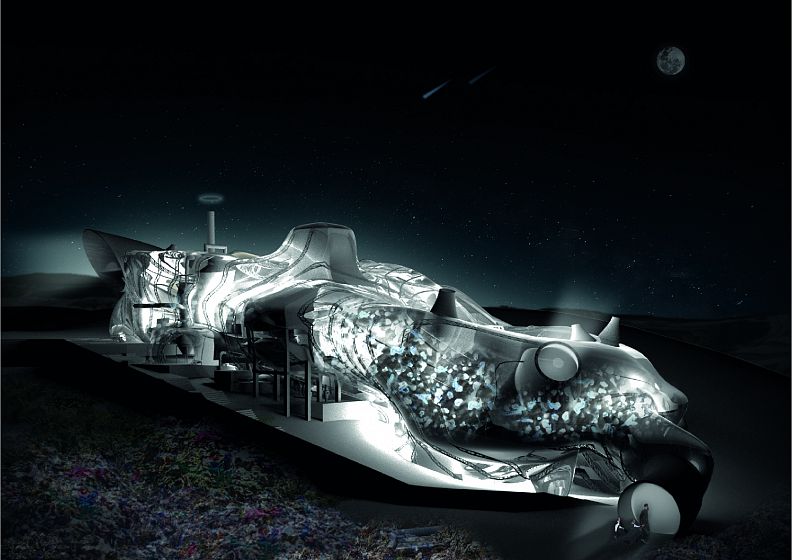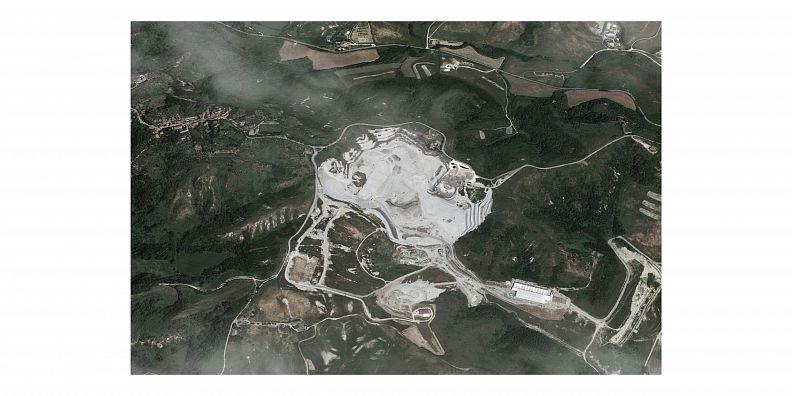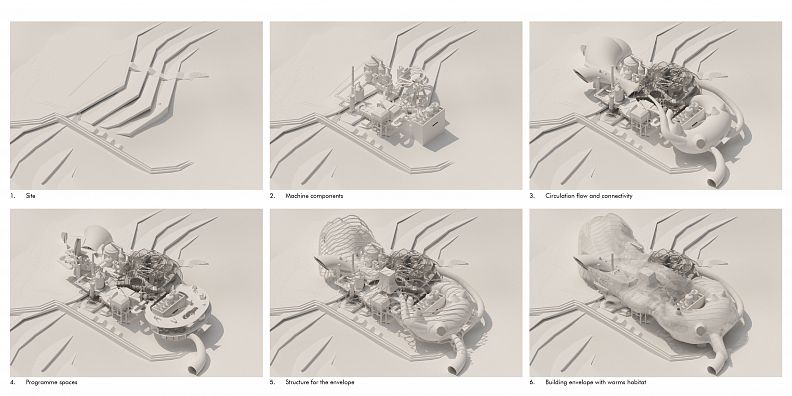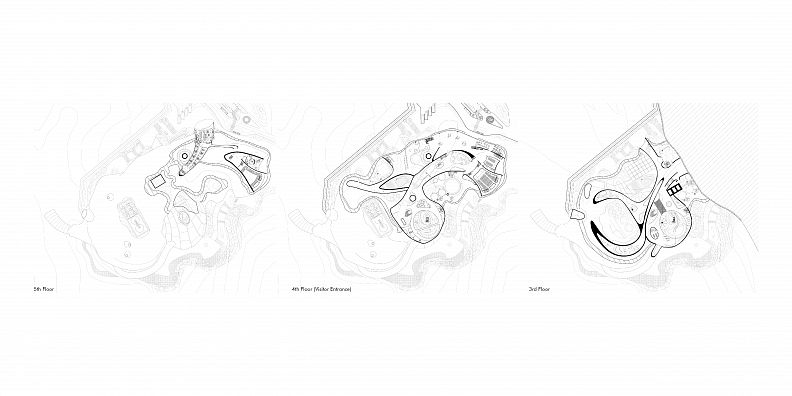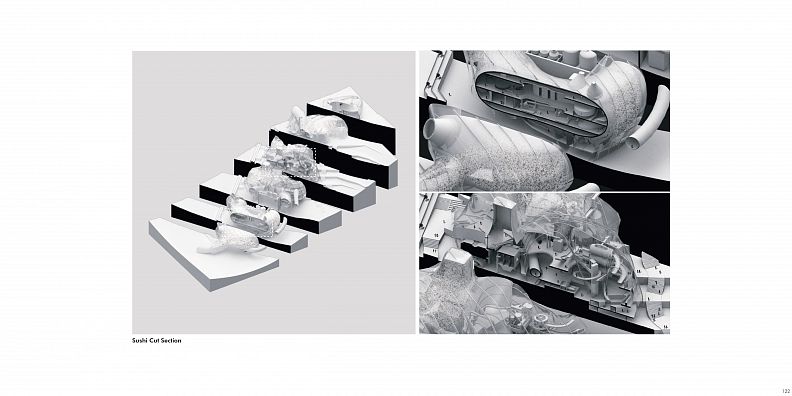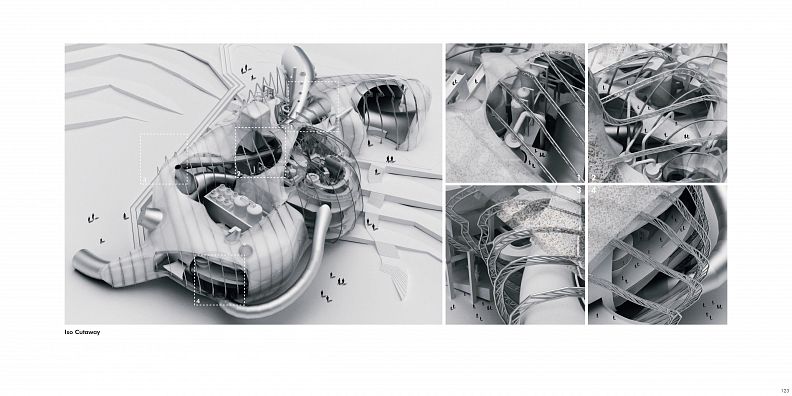Peccioli Plastic Centre & WtE Plant

Project idea
The project is located in the Legoli landfill near the town of Peccioli, surrounded by a splendid landscape. This landfill used to collect the waste from six neighbouring municipalities. Over the year, the Legoli landfill successfully transforms the waste problem into an opportunity through generating electricity and thermal energy for the houses of the town from the waste. The main concept of this project is to create a new ecosystem that combines the WtE(Waste-to-Energy) namely the machines(technology), the spatial experience(human), and the natural habitat into one interwined experience. The proposed design comprises a WtE implant and a plastic recycling system seeking for new alternatives in dealing with the plastic waste. One of the key features which drove the design of this project comes from the mealworms (Styrofoam eating Worms) experiment. The mealworms can consume plastics and convert approximately half of it into carbon dioxide through their feces and bacteria. Those bacteria which can be found in the guts of the mealworms help to break down polymers easiily. Therefore, the architecture works in terms of containing and enveloping all of these processes of transformation. The envelope is conceivedas a habitat for the plastic-eating mealworms which as a living system are ecologically coupled with architecture. The core function of this building then is to convert the combustible waste into energy while recycling the plastic into 3D filaments for further usafe.
Project description
The building is also a hub for people to learn,research,publish and understand the importance of recycling, The building will reuse the heat energy produced from the machines as electricity supply to sustain the building meanwhile reduce the energy comsumption. Thus, this project could potentially become an option to reduce landfill dispersion and helps to stimulate creative thought by initiate an ecological typology to rehabilate the ecosystems. Whilst, reinvent plastic waste in different usage, it is important in providing awareness of the environmental impact of waste.
Technical information
The building envelope is using recycled ETFE membrane from plastic waste. The skin was meant to veil the inner structure, yet leave it recognizable. According to the design, the double layer skin act as a habitat for the worms but it also acts as a means of weather protection, as shading and to a scatter the lighting after the dark. The membrane also act as thermal insulation to the air- onditioned circulation area.
